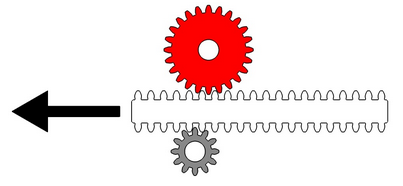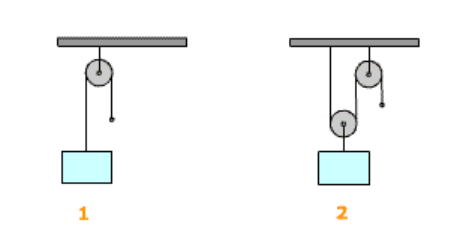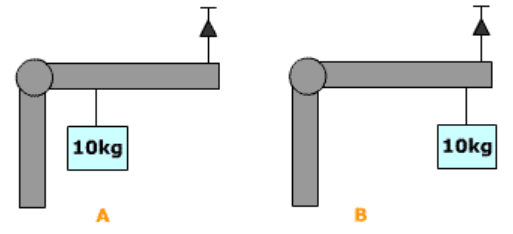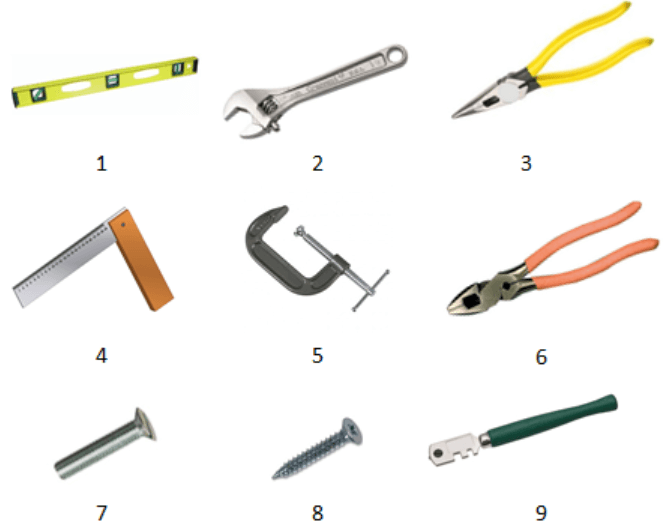 The Ultimate EIAT (Elevator Industry Aptitude Test) Guide [2025]
The Ultimate EIAT (Elevator Industry Aptitude Test) Guide [2025]
The following page will provide you with the most up-to-date information and accurate, tailored prep for the Elevator Industry Aptitude Test (EIAT):
- An EIAT introduction test - Get an initial familiarity with the EIAT test and know where to focus your preparation.
- 2 full-length EIAT mock tests - Become familiar with the EIAT time constraints, formatting, and content with accurate mock tests of the real EIAT.
- 21 additional practice tests (math, verbal, mechanical) - Strengthen the areas you're weaker in (math, verbal, or mechanical), as revealed in the EIAT introduction test.
- 4 PDF Study Guides
- 5 tools and measurements practice exams - Get covered for the second part of the assessment - the tools test.
- Full personality test prep for technical positions - Passed the EIAT and invited for an interview? Learn everything you need to know on how to present the ideal elevator mechanic profile and ace your NEIEP interview.
Keep reading below for the Complete EIAT Test Guide for 2025.
You are also welcome to check out our new EIAT Test PDF or take a free EIAT sample test.
Since 2007, JobTestPrep has helped over 5,000 candidates prepare for their EIAT test. Join them to maximize your chances of getting an apprenticeship!
- Diagnostic test
- 2 full-length EIAT test simulations
- 7 Reading Comprehension Tests
- 5 Numerical Tests + 3 guides
- 9 Mechanical Aptitude tests + guide
- 5 Tools and Measurements tests
- NEIEP Full personality test and guide for technical positions
- Interview Preparation
What is the EIAT Test?
The EIAT (Elevator Industry Aptitude Test), sometimes referred to as the Elevator Union Test is the initial screening stage for becoming an elevator mechanic.
The test is a timed test lasting around 1.5 hours, and is based on multiple-choice questions in 3 sections:
| Math | 25-35 questions |
| Mechanical Aptitude | 25-35 questions |
| Verbal Reasoning | 25-35 questions |
After taking the EIAT, you will be required to take a tool recognition test. The tools test score is not a part of your EIAT score but will be taken into account when calculating your NEIEP interview score.
The 3-Minute Video Guide for the EIAT
EIAT Test Sample Questions
Math
The Numerical Reasoning section of the EIAT contains mainly 2 subjects:
- Basic Numeracy
- Fractions and Decimals
A. Basic Numerical Reasoning
These questions deal mainly with basic arithmetic operations. You will be required to add, subtract, multiply and divide numbers at various sizes. Both time and accuracy are crucial factors in this section, so when approaching it, you must be ready to get to the correct answer with the least possible amount of work.
Basic Numerical Reasoning Sample Question
What is 37,142 – 19,857?
B) Fractions and Decimals
These questions deal mainly with various operations on fractions - four operations, conversion, etc. Although it is somewhat similar to basic numeracy questions, it requires a bit broader understanding of fractions and special techniques to cope with them.
Fractions and Decimals Sample Question
What is 2 2/7 ÷ 3 3/5?
Mechanical Aptitude
The mechanical section of the EIAT contains mainly 3 subjects:
- Gears
- Wheels and Pulleys
- Force and Torque
Of all the subjects in the mechanical section, this is possibly the one in which practice will help you most. Being a fairly technical subject, wrapping your head around the main concepts of gears is first and foremost a matter of practice.
Gears Sample Question
What are the directions of movement and velocities of revolution of the cogwheels?

Wheels and Pulleys Sample Question
In which figure does one need to exert more force to lift the weight?

Force and torque questions stand at the very heart of classical physics and deal with the most basic physical element - the force. Most commonly, levers in various forms will appear in these questions.
Force and Torque- EIAT Practice Question
A dynamometer is used for measuring force. In which figure will the dynamometer (▲) show a lower reading?
Force and Torque Sample Question
A dynamometer is used for measuring force. In which figure will the dynamometer (▲) show a lower reading?

Verbal Reasoning
The verbal reasoning section of the EIAT contains mainly 2 subjects:
- Vocabulary
- Sentence Completion
Although vocabulary is important for all the questions in the verbal section, vocabulary-type questions focus specifically on your familiarity with the meaning and context of words.
Vocabulary Sample Question
Which of the following is an antonym for "bemusing" as used in the sentence below?
The instruction manual was bemusing because it was not written in a clear and easy-to-understand format.
Sentence Completion Sample Question
The job applicants that have successfully _______ the selection tests will be _______ to take part in an interview.
EIAT Tool Test
The EIAT tool assessment is a separate part and is not included in the score of the EIAT. It will, however, be administered right after the aptitude test. The test consists of various questions regarding tools' names and usage such as diagonal cutters, tape measure, or lineman's pliers, as well as meter reading.
Your score on the tools test will be taken into your interview score.
Tools Sample Question
Which of the objects below is used for testing whether an object is horizontal?

What Score Do I Need to Pass the EIAT Test?
The EIAT is based on a pass/fail system. The threshold for passing the Elevator Industry Aptitude Test is 70%. Any applicant passing the 70% mark will pass the test and be contacted to schedule an interview. A test result of 69% and below requires re-application.
Yet, 70% Is Usually Not Enough.
Here's Why:
Your final score is calculated based on your results on the Elevator Industry Aptitude Test + tools test + interview. Then, you will be ranked on one of 4 tiers:
- Tier 1: 96–100 points
- Tier 2: 90–95 points
- Tier 3: 80–89 points
- Tier 4: 70–79 points
The higher you rank, the better the chance you will pass the test and be chosen as a paid apprentice by your prospective employer. Candidates at the lowest tier will have to wait until all candidates on the top three tiers got their shot.
That might take months or even years.
So, if you don't want to sit and wait on NEIEP's waiting list, make sure you score at the top tier and get an apprenticeship opportunity immediately after your test!
For how long is my Elevator Industry Aptitude Test score valid?
The rank you get on your elevator industry recruitment process will remain valid for 2 years.
And yes, that means that even if you passed all stages, and did not get an apprenticeship within two years, you will have to test again.
How long after the elevator aptitude test do I get the results?
There is no fixed period of time in which the EIAT test results arrive. When they do arrive, you will be ranked according to your score, and the higher you are ranked the sooner you can expect getting an apprenticeship.
Are scores reduced for wrong answers?
No. Your Elevator Industry Aptitude Test score is based only on the number of correct answers. Therefore, it is better to guess than to leave a question blank - this improve your chance to pass the EIAT.
Am I allowed to use a calculator on the NEIEP pre-apprenticeship test?
No. Since the Elevator Industry Aptitude Testis heavily based on your ability to calculate quickly and efficiently, you will not be allowed a calculator.
How hard is the elevator industry aptitude test?
Although the test is not considered a highly professional test and constitutes of rather simple topics (math, verbal, and mechanical reasoning), this written test time constraints make it difficult for the majority of candidates.
5 Pro Tips for Succeeding in the Elevator Industry Aptitude Test
- Practice tests with questions relevant to the elevator test. For instance, the format of the math section has changed in 2018, focusing more on calculation rather than complex math, yet many practice materials have failed to update accordingly.
- In the math section – when required to calculate, always check if you have enough information to select the correct answer without solving the entire question. Remember – it is a multiple-choice test, and you are not required to provide a final answer. Find more math practice questions in the following IBEW practice page.
- In the mechanical aptitude section - if you’re not sure of an effect, go to the extremes (e.g. if you’re asked whether it’s harder to row with a long or a short paddle, think of a 1-mile vs a 1-inch paddle). Learn more on how to ace mechanical aptitude questions and improve your mechanical comprehension skills.
- In the verbal reasoning section, when required to complete a sentence, notice the word "and" before the blank. That means the missing word is similar in meaning or context to the word before the "and". It might seem trivial, but in a test as speed geared as the EIAT, it can make a great difference.
- It is recommended to dedicate the last day before the exam to brushing up on all the test subjects. Research shows that we tend to forget things we've learned in the first couple of days. Re-practicing all test subjects with accurate practice tests on the last day will solidify the material in your mind.
Which Employers Use the Elevator Industry Aptitude Test?
Passing the Elevator Industry Aptitude Test is a necessary condition for getting an apprenticeship in the elevator industry, so you will encounter the test when applying to ANY elevator company.
Moreover, employers in the elevator industry work in close cooperation with the IUEC (International Union of Elevator Contractors) to find eligible candidates. A representative of your future employer will be one of your two interviewers asking the IUEC interview questions.
Some of the major employers in the elevator industry are:
- OTIS
- Schindler
- Thyssenkrupp
- WMATA
Who Administers the Elevator Industry Aptitude Test?
The EIAT was developed by the National Elevator Industry Education Program (NEIEP) for the International Union of Elevator Constructors (IUEC). The stated mission of the NEIEP is to enhance the knowledge and skills of apprentices for the benefit of workers, employers, and the elevator industry.
Do All IUEC Locals Take the Elevator Industry Aptitude Test (EIAT)?
Yes. The very purpose of the Elevator Industry Aptitude Test was to create a uniform level for apprenticeship candidates. As such - all applicants for all IUEC locals take the same test.
Other Names for the EIAT Test
The Elevator Industry Aptitude Test is known by many names, all referring to the exact same test:
- Elevator mechanic aptitude test
- Elevator union test
- NEIEP test
- Elevator apprenticeship test
- Elevator constructor apprenticeship test
- Elevator aptitude test
The Next Stage: Interview
If you have indeed achieved the 70% mark on the Elevator Industry Aptitude Test, you will be scheduled for an interview. Some applicants may also be required to take a tools test.
The interview process will take around 15-20 minutes, and will be conducted by two interviewers – one from the IUEC and the other from the employer. Subjects that might appear in the interview include:
- Education and experience
- Motivation
- Safety
- Work-related behavior
Learn more about the elevator union interview questions and content.
JobTestPrep’s EIAT PrepPack™ includes both a full technical position personality guide and an interview preparation tool to help you prepare for your interview.
How Is It Best to Prepare for the Elevator Industry Aptitude Test ?
The best EIAT test prep must cover three main key points:
- Time - Time is a major issue on the Elevator Industry Aptitude Test, which contains a large number of fairly simple questions to be solved in a short amount of time. As such, successfully passing the test requires the development of fast solving techniques, especially in the math section.
- Perfection of skills - Merely passing the Elevator Industry Aptitude Testis not enough. To maximize your chances of getting an apprenticeship, you should place yourself at the highest possible tier. IUEC policy dictates employment priority for experienced apprentices first, and then new candidates, based on their score. Sadly, candidates from bottom score tiers may wait months or even years to get an apprenticeship (if they get one at all). This is why raising your mechanical comprehension, reading comprehension and math skills is crucial using accurate practice tests and study guides.
- Full coverage - Although the Elevator Industry Aptitude Test is the first screening stage, it is not the last, and your final score will be based on ALL stages – an aptitude test, tool assessment test, and interview. Make sure your preparation covers all three stages.



